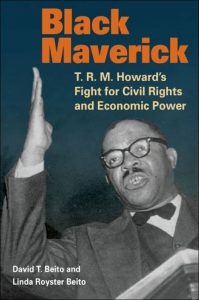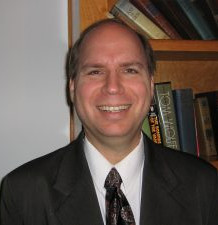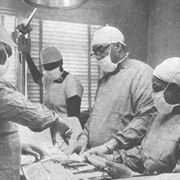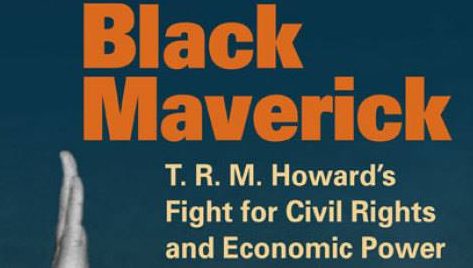Husband and Wife Transform Book about Little-Known Civil Rights Leader
By Jamon Smith

In 2009, UA history professor Dr. David Beito and wife Dr. Linda Royster Beito, associate dean of Arts and Sciences at Stillman College, released a book called “Black Maverick,” a biography of black civil rights pioneer Dr. Theodore Roosevelt Mason Howard, called T.R.M. Howard for short.
The book received positive reviews, but Howard’s story remained confined to a 304-page book that some might never open.
For the Beitos, that was not enough. The story of T.R.M. Howard needed to reach a wider audience. So in 2015, the two attempted something they had never done before: writing a screenplay about a part of Howard’s life.
The move paid off.
“Keepin’ It Mighty Hot” won first place in the Alabama Writers’ Conclave 2017 Screenwriting Competition. The prize was $100 and an opportunity for the script to be made into a film by independent producers at Council Tree Productions.

Heidi Carroll, an AWC coordinator, said this was the AWC’s first screenplay competition and the Beitos’ script was selected from 47 entries. Writers were asked to submit entries that reflect “the myriad of experiences, lives and points of view that all make up life in the Deep South,” particularly stories featuring minority, class and gender identity issues.
The Beitos are not professional screenwriters, so they were pleasantly surprised that they won.
“This is a very prestigious and old writers’ organization,” he said. “They’re poets and fiction writers, just a wide range of people, so it’s very encouraging to us to win this.”
The next step: the silver screen or TV.
“The goal is to get this to be a movie or a miniseries. It would be better as a miniseries because there’s so much about Dr. Howard, who was the P.T. Barnum of civil rights – a very funny and colorful character.”
Who is T.R.M. Howard?
The story of T.R.M. Howard begins in the rural and segregated “Black Patch” region of Murray, Kentucky, on March 2, 1908. Howard was born to impoverished parents who were tobacco twisters – unskilled tobacco-factory workers.
His parents divorced when he was 3 and while very young he was forced to provide for his family by hunting. His mother would often give him only three shotgun shells to hunt with and tell him, “you better hit something or we won’t eat tonight.”
In 1917 when Howard was 9, he witnessed the attempted lynching of a man named Lube Martin who was known to the Howard family. Martin had killed a deputy sheriff in self-defense.
Martin was arrested. Though the governor prevented the lynching, this is believed to have been a turning point in Howard’s life that set the foundation for him becoming a civil rights activist.

As a child, Howard was hired by a white doctor named Mason, who thought he was talented. Howard added the doctor’s name to his own.
At Union College in Nebraska, Howard was the only black student. He later attended Loma Linda University near Los Angeles, where he wrote a column for a black newspaper.
In the early 1940s, Howard moved to an all-black town called Mound Bayou in the Mississippi Delta near Cleveland where he became the chief surgeon of Taborian Hospital.
He started his own businesses in the area and owned a large cotton plantation. Howard also employed Medgar Evers as a salesman for his insurance company, giving Evers his first job.
A Pivotal Point: Emmett Till’s Murder
In 1955, he got involved in the Emmett Till murder case. Till, a 14-year-old black boy from Chicago, was brutalized, shot and thrown into a river by two white men for allegedly flirting with a white woman in Money, Mississippi.
When Howard heard about the case he said, “there would be hell to pay in Mississippi.”
He went with the NAACP to track down witnesses. When Till’s mother came from Chicago to testify at the trial, she stayed with Howard, who provided her with armed escorts. Black journalists stayed with him as well.
“He was very much at the center of the case,” David Beito said.
“The court wasn’t going to convict the accused murders no matter what, but Howard did the best that he could.”
The screenplay focuses on a five-month period of Howard’s life that centers on the Till murder case.
After the Till case ended, the NAACP sponsored Howard to speak about the case nationally.

“In a lot of ways, that was a key moment in the origins of the civil rights movement,” David Beito said. “One of the speeches Howard gave in Montgomery happened three days before Rosa Parks refused to give up her seat on a bus. She said she was thinking about Emmett Till when she did it.”
Howard would go on to lead many other civil rights activities. His successful boycott against a white business that wouldn’t provide restrooms in the Mississippi Delta was years before the Rev. Dr. Martin Luther King Jr. led similar boycotts in Montgomery.
“Howard was very confident and would say things he could get away with, but he was also very heavily armed and so was everyone around him,” David Beito said. “He and his people were armed to the teeth.”
In 1956, Howard left Mississippi for Chicago, where he died in 1976.
“He was the kind of guy who was always landed on his feet …. He wouldn’t dwell on former projects and didn’t want to talk about what he did in the past.
“He was a big game hunter, a serious Seventh-day Adventist, he ran for Congress, there’s just so much. He was a very snappy dresser. He wanted only the best. A renaissance man and black maverick.”
